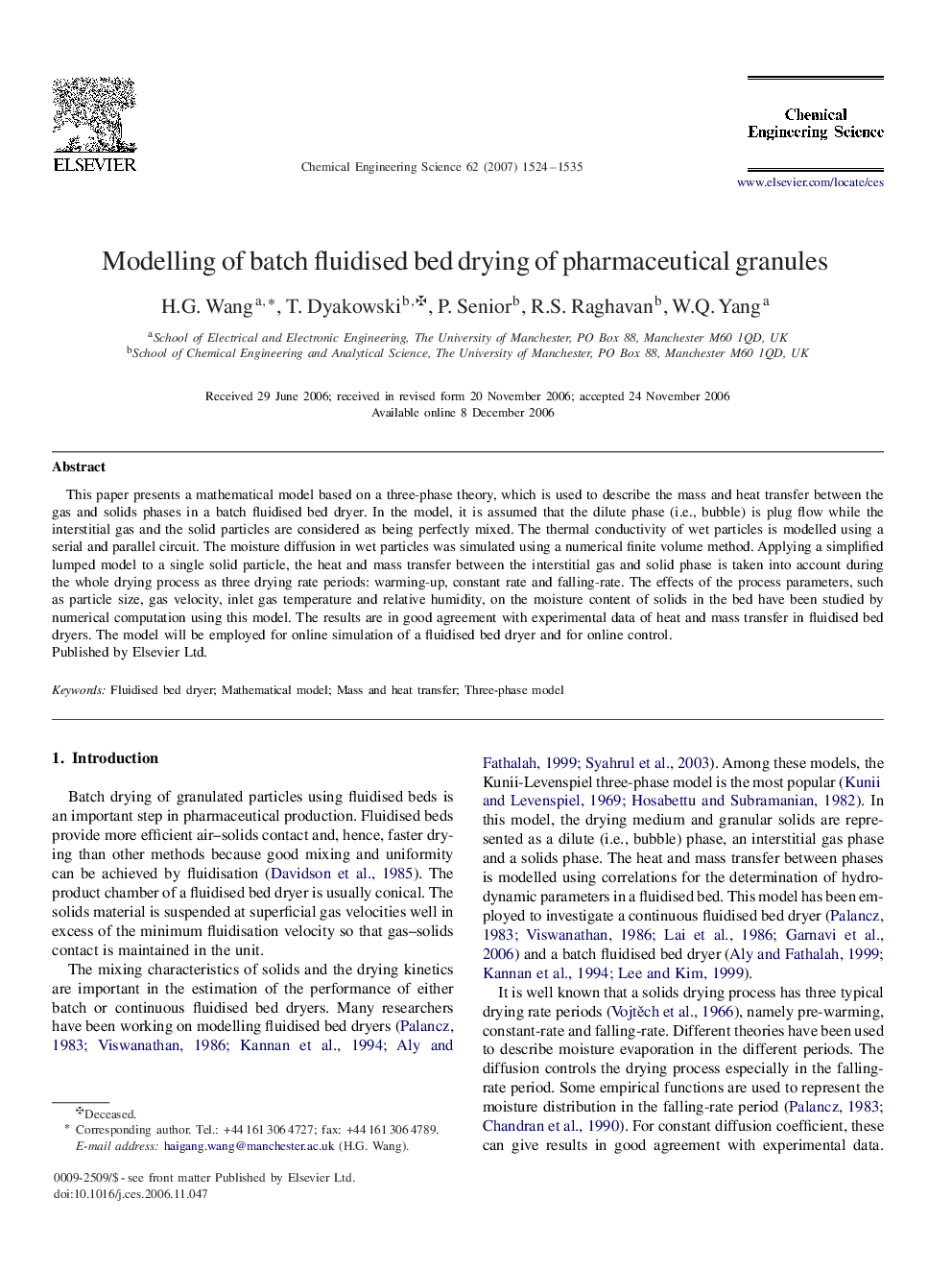| Article ID | Journal | Published Year | Pages | File Type |
|---|---|---|---|---|
| 158426 | Chemical Engineering Science | 2007 | 12 Pages |
This paper presents a mathematical model based on a three-phase theory, which is used to describe the mass and heat transfer between the gas and solids phases in a batch fluidised bed dryer. In the model, it is assumed that the dilute phase (i.e., bubble) is plug flow while the interstitial gas and the solid particles are considered as being perfectly mixed. The thermal conductivity of wet particles is modelled using a serial and parallel circuit. The moisture diffusion in wet particles was simulated using a numerical finite volume method. Applying a simplified lumped model to a single solid particle, the heat and mass transfer between the interstitial gas and solid phase is taken into account during the whole drying process as three drying rate periods: warming-up, constant rate and falling-rate. The effects of the process parameters, such as particle size, gas velocity, inlet gas temperature and relative humidity, on the moisture content of solids in the bed have been studied by numerical computation using this model. The results are in good agreement with experimental data of heat and mass transfer in fluidised bed dryers. The model will be employed for online simulation of a fluidised bed dryer and for online control.
